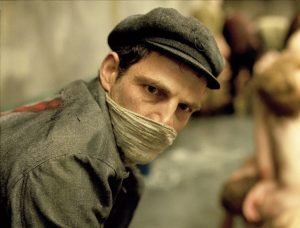Exploring the Dark Themes and Haunting Imagery of Michael Haneke’s ‘The White Ribbon’
Michael Haneke‘s films are known for their unsettling themes and haunting imagery, and “The White Ribbon” is no exception. This German-language film, released in 2009, is set in a rural village on the eve of World War I and explores the sinister events occurring in the community. In this article, we will delve deeper into the dark themes and imagery of “The White Ribbon” and analyze how Haneke masterfully creates a chilling atmosphere throughout the film.
Michael Haneke‘s films are known for their unsettling themes and haunting imagery, and “The White Ribbon” is no exception. This German-language film, released in 2009, is set in a rural village on the eve of World War I and explores the sinister events occurring in the community. In this article, we will delve deeper into the dark themes and imagery of “The White Ribbon” and analyze how Haneke masterfully creates a chilling atmosphere throughout the film.

Introduction to Michael Haneke’s filmmaking style
When it comes to filmmaking, Michael Haneke is known for his distinctive style that is characterized by a stark realism that leaves audiences feeling uncomfortable yet captivated at the same time. Haneke’s films often tackle difficult and thought-provoking subject matter, such as violence, alienation, and social inequality. His use of long takes, static shots, and deliberate pacing create a sense of unease that lingers with viewers long after the film has ended. In his 2009 masterpiece “The White Ribbon,” Haneke explores the roots of fascism in pre-World War I Germany through a haunting and unsettling tale that showcases his unique filmmaking style.
Brief synopsis of “The White Ribbon”
“The White Ribbon” is a 2009 German drama film directed by Michael Haneke. Set in a small village in northern Germany before World War I, the film follows a series of unexplained and increasingly sinister events that occur in the community. The film explores themes of oppression, violence, and power dynamics within a rigidly hierarchical society. Haneke’s use of black and white cinematography, combined with his precise direction and subdued performances from the cast, creates a hauntingly beautiful and thought-provoking film.
Setting of the film
The setting of Michael Haneke’s ‘The White Ribbon’ plays a crucial role in the film’s narrative. The movie is set in a small German village just before World War I, and the atmosphere of the village perfectly captures the strict and oppressive social structure of the time. The white ribbon, which is worn by some of the characters, symbolizes purity and innocence, but as the story unfolds, it becomes clear that nothing in this village is as it seems. The cold and austere setting perfectly complements the film’s themes of repression, violence and secrecy, making ‘The White Ribbon’ a haunting and unforgettable viewing experience.

Themes explored in “The White Ribbon”
In Michael Haneke’s “The White Ribbon”, the themes explored are incredibly complex and layered. The film delves into the nature of power, corruption, and violence in a small German village on the eve of World War I. Haneke masterfully weaves together various character narratives to create a haunting portrait of a society on the brink of collapse. The film explores the impact of parental violence on children, the oppressive nature of the patriarchal society, and the way that abuse of power can perpetuate violence down through generations. Overall, “The White Ribbon” is a powerful and thought-provoking exploration of the darker side of human nature.
Symbolism in the film
Michael Haneke‘s ‘The White Ribbon’ is a film that is rich with symbolism. From the use of the titular white ribbon to represent purity and innocence, to the recurring motif of the broken glass, which symbolizes the shattered lives of the villagers, every element of the film has a deeper meaning. The black and white cinematography, with its stark contrasts, highlights the themes of good and evil, while the use of chiaroscuro lighting emphasizes the darkness lurking beneath the seemingly idyllic village setting. Haneke’s masterful use of symbolism adds layers of meaning to the film, making it a haunting and thought-provoking work of art.
Cinematography in “The White Ribbon”
In Michael Haneke’s ‘The White Ribbon’, the cinematography plays a pivotal role in creating a haunting atmosphere. The film is shot in black and white, which enhances the stark and austere nature of the story. The camera work is precise and intentional, capturing every detail with a sharpness that draws the audience in. Haneke uses long, static shots to emphasize the stagnant and oppressive nature of the small German village where the story takes place. The use of natural light also adds to the realism of the film, while the shadows and contrasts create a sense of foreboding. Overall, the cinematography in ‘The White Ribbon’ is an integral part of the film’s success in creating a tense and unsettling mood.

Sound design in “The White Ribbon”
The sound design in Michael Haneke’s “The White Ribbon” is a crucial element in creating the unsettling and ominous atmosphere of the film. From the opening scene, the sound of the horse’s hooves on the cobblestone sets a foreboding tone. The use of ambient sounds, such as the wind and the creaking of the old house, creates an eerie and uncomfortable feeling throughout the film. The absence of music also adds to the unease, leaving the audience with only the sounds of the characters and their environment. Overall, the sound design in “The White Ribbon” is a masterful example of how sound can enhance the storytelling in a film.
Character analysis of key figures in the film
In Michael Haneke’s ‘The White Ribbon’, the character analysis of the key figures is crucial to understanding the story. The film examines the lives of the inhabitants of a small village in pre-World War I Germany and the social structures and hierarchies that govern their behavior. The character of the village doctor, for example, is a complex figure who is both respected and feared by his patients. The teacher, on the other hand, is a gentle and kind-hearted man who is troubled by the violence he witnesses in the village. Through careful analysis of these characters and their interactions, we can gain a deeper understanding of the themes and messages that Haneke is trying to convey in this powerful and thought-provoking film.
Critical reception of “The White Ribbon”
“The White Ribbon” is a critically acclaimed masterpiece directed by Michael Haneke that explores the mysteries and complexities of a small village in Germany before World War I. The movie’s unique black and white cinematography, its use of symbolism and allegory, and its strong performances by the ensemble cast have earned it numerous accolades and critical acclaim. Critics have praised the film’s haunting and eerie atmosphere, as well as its commentary on themes such as power, violence, and religion. “The White Ribbon” is a must-see for cinema enthusiasts and fans of Haneke’s work alike.
Conclusion and overall analysis of the film
In conclusion, Michael Haneke‘s ‘The White Ribbon’ is a masterpiece that leaves the audience with a sense of unease and an array of unanswered questions. The film’s exploration of the themes of power, morality, and repression is both thought-provoking and disturbing. The director’s use of black and white cinematography adds to the film’s haunting quality, and the acting by the ensemble cast is superb. Overall, ‘The White Ribbon’ is a challenging yet rewarding film that showcases Haneke’s mastery of his craft. It is a must-see for fans of thought-provoking cinema.
For more information about Michael Haneke’s ‘The White Ribbon’ analysis, including movie details, cast information, etc..
check out the filmaffinity page.



